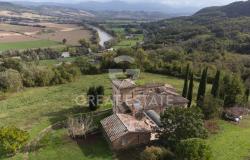Rome's animal park is proving a hit with tourists, inching up to third place on the Italian capital's list of most visited sites.
The sudden upswing in the popularity of the former zoo, now known as the Rome Biopark, surprised authorities, the city's culture councillor, Umberto Croppi, admitted on Tuesday.
Two of the Eternal City's best-established sites, the Vatican Museum and the Colosseum, topped the list.
Discussing the unexpected surge in visitors to the biopark, Croppi suggested other sites could enjoy a boom similar to that of the biopark with the right approach.
He said the traditional focus on already well-known attractions could mean other potentially popular sites were being passed over by visitors.
One solution would be to open a centre designed to promote all of Rome's heritage sites rather than just its current stars.
''The goal should be a tool that maps out different itineraries for tourists and residents on the basis of thematic categories,'' he explained. ''This would ensure information is supplied about all the capital's many attractions''.
Rome's zoo opened in 1908 but met with mixed success until the late 1990s, when it was relaunched in its current incarnation.
The revamped biopark focuses on conservation, and houses only those animals born in captivity or 'rescued' from poor conditions elsewhere.
Under a strict policy imposed by the city council, wild animals are not allowed to reproduce in the biopark on the grounds their young will be forced into an unnatural lifestyle.
In 2006, a baby giraffe was sent to a nature reserve in Africa after the biopark rescued a female, not knowing she was pregnant.













